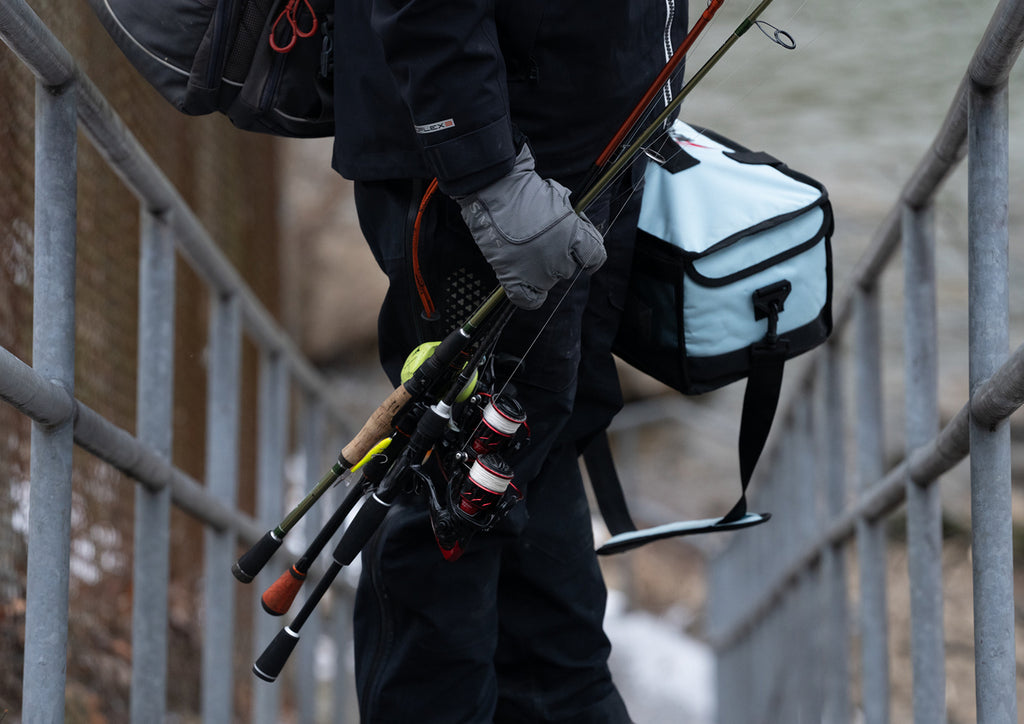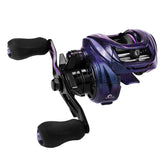
How To Use A Spinning Reel
The spinning reel is likely the most popular reel in the fishing industry. From tiny 500 series ice or bluegill fishing all the way to 8000 size behemoth reels that can pull in monster fish the spinning reel can literally do it all. What sets it apart from all the other types of reels is its ease of use. Before I get into the basics of how to use a spinning reel, I will go over the basics in the parts and mechanics of the reel.
One of the most noticeable parts of the reel is the spool and the metal “bar” that goes around about half of the spool. This semi-circular bar is called a bail and serves as one of the most important parts of the reel which I will explain later. The circular part that holds the line is called the spool and even though it looks like it spins, it actually does not. Next up is the handle which is the extension off the reel that normally has some sort of grip on it. I have several that have simple plastic formed to be able to be held between the angler’s index finger and thumb. Others are fancier with rubberized handles or are larger to give more surface area for that additional grip. The last piece that is very obvious is the reel stem. This “T” is what connects the reel to the rod as it extends from the body of the reel and is secured with a screw down fastener system on the reel holder of the rod.
With the most pronounced parts of the reel identified we can now move on to the less noticeable parts of the reel. On the top of the spool there is normally a piece of plastic that can look like a crank of a handle. This is the drag adjustment, as you tighten the drag the harder it is for the line to come off the spool. Another small lever is normally hidden at the front of the body that switches back and forth. This lever will allow the reel to either move back and forth or to only move feely in one direction and not in the other direction. This is one of the least used features I have ever seen used and can personally say it is not something I have ever taken advantage of. The last little round cover that screws on is at the opposite end of the handle. By unscrewing this, the handle will normally fold down for just a touch of reduction in size for storage. By unscrewing it completely, the handle will come completely off so it can be switched from right to left hand. This is a huge benefit to those that are left-handed and is the one kind of reel where a lefty does not have to think about how to be comfortable when fishing.
Drag adjustment looks like a crank on the top of the spool

Okay so let’s start with the orientation of the reel. This is a major point! To put it simply, a right-handed reel is held with the right hand and is cranked with your left hand. The reel faces towards the floor and the stem normally fits between the middle and ring finger of your dominant hand and is cranked with your non-dominant hand. While you are turning the handle, you will notice the bail of the reel and the part of the reel that it is attached to will begin to spin around the spool. This spinning is how this kind of reel got its name; the spinning motion of the bail will guide the line back onto the spool. So, a question would be at this point is now that we know how the line will come back on the spool, how will the line come off of the spool. Most of the time that would be done in the casting process.
Line guide on the bail of the reel

Before we get to casting, we should discuss how the line works with the reel. Upon inspecting the bail, you will find a groove or indent where the line guide is located. This is another important part of using a spinning reel, you must be sure that the line coming off the spool is fed under the bail before going through the eyes of the rod and eventually to the rig of choice for the fishing you are going to do. Simple enough but this part is vital when learning how to cast. Let’s go over that now.
While holding the reel in the hand you choose, you simply turn the handle until the line guide and line is closest to the rod. Now, imagine a simple finger gun that you might have done as a kid while making a “pew, pew” kinda sound. With this in mind, extend your pointer finger and curl it around the line where your first joint is from the top of your finger. This is the first part of the casting process. What you might only realize now is that the bail will flip up a bit past perpendicular to the top of the reel. At this point the casting action is the process of holding the line with your pointer finger, flip up the bail, look behind you and bring your rod back over the shoulder you are holding the reel. Imagining your head is straight up and down at a 12 position, bring the rod tip back to the 2 o’clock position and cast with a single motion bringing the rod to the 10 o’clock position and as your rod is approaching the 10, let the line loose and let your finger go back to a “finger gun” and release the line.
Little round cover on the opposite end of the handle

After the cast is complete, most reels will flip the bail over as soon as you turn the handle. That is fine but many times I will simply flip the bail over after the cast myself. At that point, you can turn the handle a bit and reel in any line that is slack. Now let’s say you have transitioned from fishing to catching! Fish on!
Turn the handle a bit and be sure the hook is secure. The drag should be set to let out line when needed, not too tight where there is too much tension on the line and not too loose where the line comes streaming off the reel. It’s a feel thing that anglers get to know as you catch more fish and understand the targets you are fishing for.
I certainly hope that this was helpful for you, as always please let me know how it works out for you as you become a spinning master!












